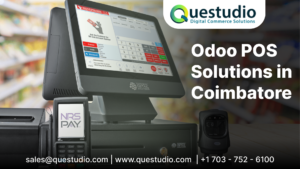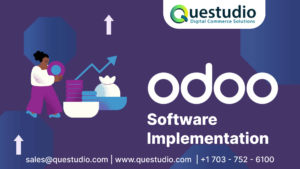How To Overcome Manufacturing Challenges in 2022 With PIM
It has not been an easy time for manufacturers in recent years. Because things appear to be improving, now is an attractive time for manufacturers to investigate methods of mitigating not only the key challenges that they are currently facing, but also those that may prove to be more significant headaches in the future.
Manufacturing in the United States is second only to China in terms of global output, accounting for slightly less than 17 percent of total output. In 2019, the sector contributed 11 percent to the gross domestic product (GDP) of the United States. Since then, the United States and the rest of the world have witnessed a dramatic increase in the use, accessibility, and scope of electronic commerce, and the manufacturing industry is no exception to this.
We can safely assume that when discussing a sector of this size, the challenges it faces will be equally diverse, and there will be no single solution to address them all. The good news is that there are solutions that can address a collection of issues at the same time; one such tool is the deceptively simple Product Information Management (PIM) tool.
What is a PIM tool, and how does it work?
As a central repository for all types of product-related content and data that is intended to be published on eCommerce sites, brochures, and even organised spreadsheets, a Product Information Management tool serves as a one-stop shop for all of your needs.
As an example, instead of storing product specifications and descriptions, as well as accompanying images and videos, in multiple files and locations, a single location can be used. In order to make the collection, enrichment, and distribution of product information more efficient, the tool is intended to be used in conjunction with multiple distribution channels.
Manufacturing problems that a PIM can help with include:
Making the switch to eCommerce and direct-to-consumer marketing (DTC)
eCommerce is here to stay, whether you like it or not. eCommerce was already gaining popularity, and the pandemic only served to increase that acceptance even further. Many businesses have already made the transition to the internet, whether through the use of a third-party eCommerce store or their own website. In order to make such a change, there would need to be an adjustment period, as well as the assimilation of new skills into the team.
In such a situation, having a product information management tool in place, especially when thousands of products are involved, can significantly reduce the burden of transitioning to an online platform. Having the tool handle product data collection, syncing, enrichment, and publication allows the team to focus on other more pressing issues because a powerful number of processes and hours of labour are eliminated from the team’s workload.
There has also been a gradual increase in the acceptance of the DTC, or Direct-to-Consumer, method of distribution throughout the pandemic. It’s probable that consumers will have higher expectations of the businesses from which they purchase their goods.
They become increasingly accustomed to making regular purchases from eCommerce behemoths such as Amazon, which exacerbates the problem. Similarly, the product information management system (PIM) would be critical in streamlining product information and presenting it in its best form: free of errors and duplicates, and best suited to the format of the platform in question.
There is a labour shortage.
The current skills gap, according to a study conducted by Deloitte and The Manufacturing Institute, could result in 2.1 million unfilled jobs in the United States manufacturing sector by 2030, if nothing is done. Many factors contribute to this gap, ranging from an increasing number of “baby boomers” retiring to an increase in the use of technology – which is a distinguishing feature of the Fourth Industrial Revolution. As a result, even within organisations, there are fewer minds and hands, thereby increasing the value of their working hours still further.
Streamlining this would also imply the elimination of processes that are redundant and/or time-consuming. Being able to prevent errors would reduce the amount of time spent correcting them after they have occurred. A product information management system (PIM) is the most effective tool for accomplishing all of the objectives listed above when it comes to product data.
Product information management (PIM) tools are intended to eliminate a significant amount of manual effort associated with maintaining product information spreadsheets, as well as the sources of this content and the locations where it is to be published.
They are able to detect errors and missing data almost immediately, and they facilitate data synchronisation across various marketing channels. The fact that the system is centralised means that everyone has real-time access to the most recent information.
Look for PIM solutions that place a high arrangement on ease of use. It is not necessary to exclude those who are less skilled in this area from participating in the integration of technological solutions into your organisation.
Labor Retention and Recruitment
As a result of the pandemic, many people’s perspectives on their jobs have shifted significantly. Many people, including those in the manufacturing industry, are changing their perspectives on their jobs, for a variety of reasons, ranging from seeking alternative sources of income to realising that they can accomplish more with less money.
A total of 570,000 manufacturing jobs may have been lost as a result of the pandemic, according to estimates. Consequently, organisations that want to retain their best employees are prioritising employee satisfaction as one of their top priorities.
So, what if you had the ability to use tools to alleviate monotony? Product information management (PIM) without the use of a good PIM tool can result in a significant loss of time (and interest) in maintaining multiple channels with the appropriate content. The right product information management (PIM) tool can not only eliminate the need for redundant tasks, but it can also streamline many efforts, particularly those aimed at product marketing.
It is possible to keep existing trained team members satisfied with their workplace and less likely to follow similar opportunities elsewhere by allowing for more creativity, lighter schedules, and fewer menial tasks.
Product Data Security is a concern.
In an increasingly competitive industry, safeguarding product data against potential corruption or loss is essential to success. If a company relies on multiple spreadsheets or in-house product information solutions, this can manifest itself as easy access to editable files, a lack of access or edit tracking, and information that is vulnerable because of a lack of security fallbacks.
The bottom line is as follows:
At the end of the day, every company wants to see its revenue grow even further. Each quarter brings with it the ritualistic measurement of business progress and the weighing of green and red to determine the health of the company’s financial condition.
Profitability is an important key performance indicator (KPI) in this context because it assists businesses in determining the success of the systems and processes they have in place to provide the smooth and efficient operation of their business. Return on Investment
An Enterprise Resource Planning (ERP) system appears to be an additional expense on the surface, particularly for manufacturers who have previously relied on tools such as spreadsheets or short-term in-house solutions.
But they make up for it by saving labour time and money, preventing costly errors, opening new markets, and improving the overall efficiency of eCommerce ventures – particularly those with a large number of SKUs to maintain.
Related Posts





